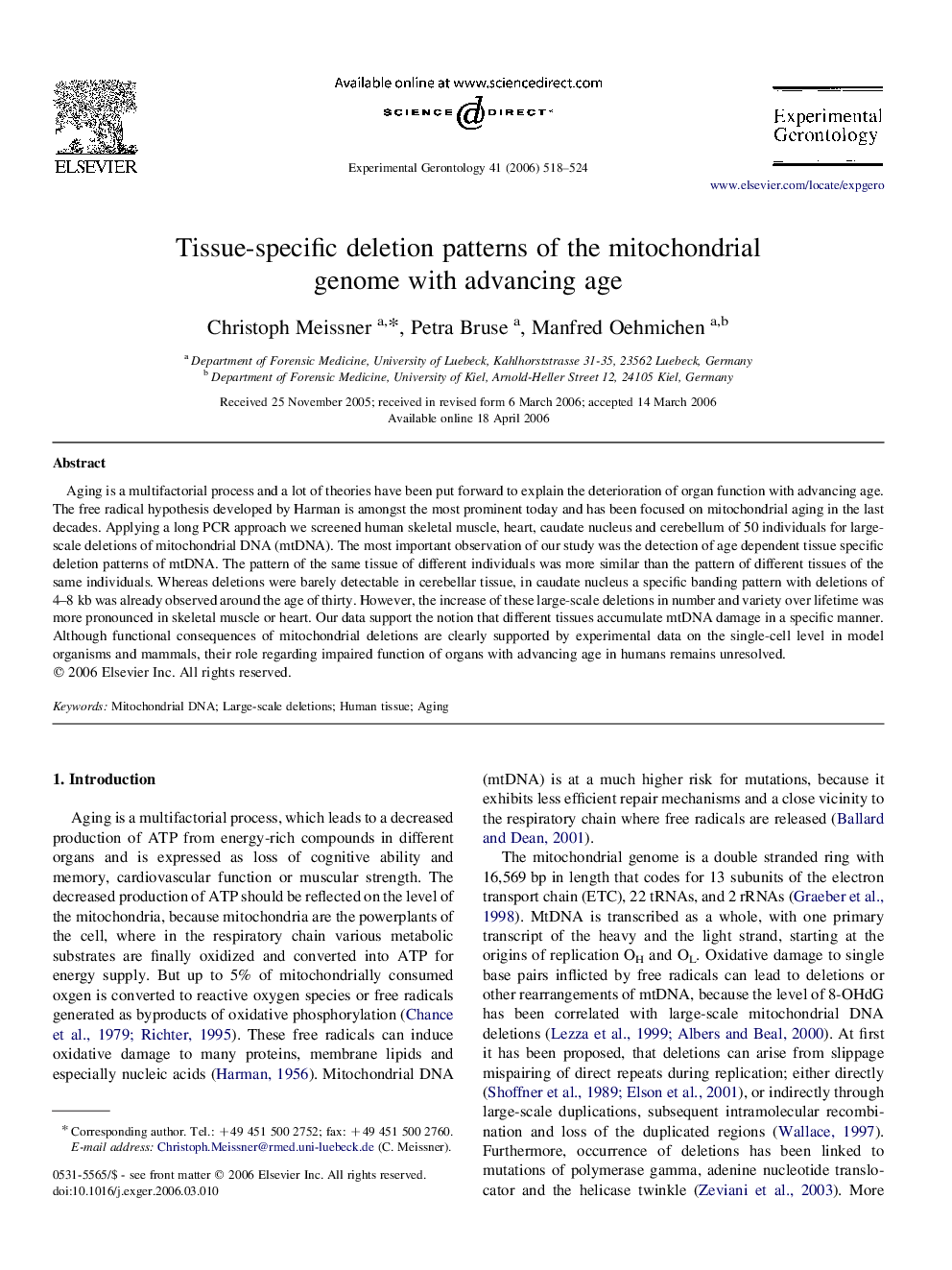| Article ID | Journal | Published Year | Pages | File Type |
|---|---|---|---|---|
| 1907610 | Experimental Gerontology | 2006 | 7 Pages |
Aging is a multifactorial process and a lot of theories have been put forward to explain the deterioration of organ function with advancing age. The free radical hypothesis developed by Harman is amongst the most prominent today and has been focused on mitochondrial aging in the last decades. Applying a long PCR approach we screened human skeletal muscle, heart, caudate nucleus and cerebellum of 50 individuals for large-scale deletions of mitochondrial DNA (mtDNA). The most important observation of our study was the detection of age dependent tissue specific deletion patterns of mtDNA. The pattern of the same tissue of different individuals was more similar than the pattern of different tissues of the same individuals. Whereas deletions were barely detectable in cerebellar tissue, in caudate nucleus a specific banding pattern with deletions of 4–8 kb was already observed around the age of thirty. However, the increase of these large-scale deletions in number and variety over lifetime was more pronounced in skeletal muscle or heart. Our data support the notion that different tissues accumulate mtDNA damage in a specific manner. Although functional consequences of mitochondrial deletions are clearly supported by experimental data on the single-cell level in model organisms and mammals, their role regarding impaired function of organs with advancing age in humans remains unresolved.
